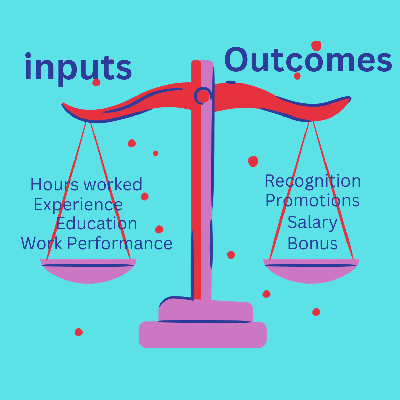Pay equity theory, introduced by J. Stacy Adams (1965), is a motivational theory that explains how individuals assess fairness in the relationship between their job performance and compensation. It builds on the broader incentive-contribution theory, which suggests that people evaluate whether the rewards they receive are commensurate with the efforts they invest.
At its core, the theory assumes that people strive for balance and fairness in their work environment. When this equity balance is disrupted—whether through overcompensation or undercompensation—employees may alter their behavior to restore psychological and motivational equilibrium.
Equity as a Motivational Driver
Employees make constant comparative judgments about compensation:
-
Against their own past experiences
-
Relative to peers within the same organization
-
Compared to similar roles in other organizations
What matters most is the perceived fairness, not necessarily the absolute amount of compensation. When individuals perceive a mismatch between what they give (effort, performance) and what they receive (pay, recognition), they experience cognitive dissonance and seek to correct it.
Key Findings from Research
Adams’ theory has been supported by several empirical studies, particularly in relation to different pay structures:
-
Hourly pay + overcompensation
→ Employees tend to increase both quantity and quality of work. -
Piece-rate pay + overcompensation
→ Employees typically maintain output volume, while improving quality. -
Piece-rate pay + undercompensation
→ Employees may attempt to increase quantity at the expense of quality. -
Hourly pay + undercompensation
→ The assumption that employees reduce performance remains less conclusive.
These reactions suggest that workers are not only motivated by monetary rewards, but also by the relative fairness of these rewards.
Practical Considerations
While pay equity theory offers valuable insights, actual workplace behavior is shaped by additional influences:
-
Team dynamics and organizational culture
-
Managerial expectations and feedback
-
Technical or structural constraints on performance
For HR and compensation professionals, the theory highlights the importance of transparent, fair pay practices and regular benchmarking to minimize perceived inequity and maintain motivation.
« Back to Glossary Index





![15 Employee Offboarding Templates That Save Hours of HR Time [Free Downloads] 15 Employee Offboarding Templates That Save Hours of HR Time [Free Downloads]](https://i1.wp.com/www.hrcloud.com/hubfs/Header.png?w=150&resize=150,100&ssl=1)
